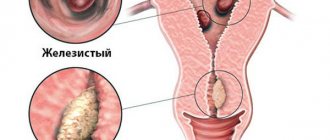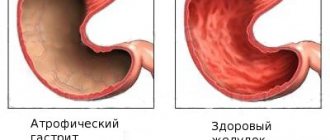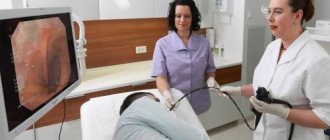Varieties of staphylococcus
Currently, approximately 30 varieties of staphylococcus have been identified. Only a few of them are pathogenic:
- Golden,
- Saprophytic,
- Epidermal.
Staphylococcus aureus is considered the most dangerous. It provokes the formation of purulent masses in the internal organs, sepsis, staphylococcal meningitis, accumulation of pus under the epidermis, and an allergic rash. Bacteria can infect the brain, which always leads to irreparable consequences.
Saprophytic staphylococcus is recognized by scientists as safe for life. It can only cause such an unpleasant disease as cystitis in women. In other cases, this type of staphylococcus does not give any symptoms. You can get rid of it with the help of antibiotics, immunomodulators, and anti-inflammatory drugs.
Staphylococcus epidermidis is dangerous for people with weak immune systems. It can also cause various complications in newborns and people who have recently undergone surgery.
Antimicrobial drugs that eradicate staphylococci
Inhibitor-protected and antistaphylococcal penicillins, cephalosporins, macrolides and fluoroquinolones are the main drugs used in the treatment of staphylococcal infections.
The difficulty is that there are methicillin-resistant Styphylococcus aureus, which causes severe and difficult to treat diseases, for example, sepsis and staphylococcal pneumonia. Microbiologists call it multidrug-resistant Staphylococcus aureus.
The medical community is sounding the alarm, because every year the number of resistant strains increases by an average of 10%. These data were obtained during scientific research conducted in the United States of America. When methicillin-resistant staphylococcus enters the body, the likelihood of death increases sharply. However, even modern drugs of the latest generation do not guarantee complete eradication of pathogenic bacteria.
Clarithromycin ®
This is a semi-synthetic broad-spectrum macrolide antibiotic. It is resistant to high acidity and has good pharmacological properties. For example, the resistance of clarithromycin ® to hydrochloric acid is one hundred times higher than that of erythromycin, which is the first antibiotic that laid the foundation for the class of macrolides. Clarithromycin disrupts the synthesis of bacterial proteins, leading to the death of the pathogenic microorganism.
The drug is used in the treatment of pyoderma, otitis and inflammatory diseases of the upper respiratory tract: sinusitis, laryngitis, adenoiditis, etc. It is not advisable to take an antibiotic during lactation and in the last stages of pregnancy. Treatment of Staphylococcus aureus with potent antibiotics is carried out only if the benefit to the mother outweighs the potential risk to the fetus.
Azithromycin ®
This is a broad-spectrum antibacterial drug related to azalides. Azithromycin ® is actively used in the treatment of otolaryngological diseases. It suppresses protein synthesis, blocks the growth and reproduction of pathogens.
Used for the treatment of pyoderma, bronchitis, otitis, sinusitis, etc.
It can be taken during pregnancy, but only under the supervision of a doctor. Treatment of staphylococcus with Azithromycin ® during breastfeeding is unacceptable.
Vancomycin ®
Tricyclic antibiotic from the group of glycopeptides. Refers to reserve drugs for antimicrobial therapy against Staphylococcus aureus and other multidrug-resistant bacteria.
Vancomycin ® is aggressive against many resistant strains, and the bactericidal effect is due to inhibition of the biosynthesis of the cell wall of the pathogenic microorganism. It is contraindicated in the first trimester of pregnancy. In later stages, it is taken only in the absence of alternative treatment methods.
Amoxicillin ®
This is a semi-synthetic medicine with a broad spectrum of action, related to penicillins. The acid included in its composition is obtained from mold cultures. These organic compounds are highly active against staphylococcus (with the exception of penicillinase-producing strains).
Amoxicillin ® is often prescribed as a preventive measure. Its use allows you to avoid postoperative complications. The bioavailability of the drug is higher than that of most analogues. The antibiotic penetrates the placental barrier, excreted in small quantities in breast milk.
Routes of infection
This infection affects quite a large number of people, as infection occurs in many ways:
- Due to consumption of poorly processed food (meat, fish, vegetables),
- During contact with an infected person, animal,
- When using someone else's personal hygiene items (razor, towel, comb),
- Airborne (a person inhales bacteria, after which they enter the blood and spread throughout the body),
- Ignoring basic hygiene rules,
- Through surgical instruments (during surgery) and other medical equipment.
https://youtu.be/1MN3a4McJhg
What kind of microorganism is this?
This is the most common microorganism that humans encounter. There are many subspecies of bacteria - golden , epidermal and others. It lives on the skin, mucous membranes and in the human intestines. With developed local immunity and a normal balance of microflora, staphylococcus is not dangerous for the patient.
If there are any factors that weaken the immune system, or the patient is exposed to a large number of bacteria (the most common example is food poisoning), and damage to the mucous membrane occurs, inflammatory processes caused by staphylococcus occur.
Pathogenesis and signs of infection
Microorganisms enter the body through mucous membranes and damaged skin barrier. This can occur during injury, surgery, or insertion of a catheter. After this, staphylococcus spreads through the blood to all internal organs.
The disease is sluggish, the initial manifestations are almost invisible. As the disease progresses, the patient's general health begins to deteriorate. Body temperature rises, a feeling of weakness, exhaustion appears, skin becomes pale, and a rash appears. Nausea and stool upset occur less frequently. If microorganisms have infected the gastrointestinal tract, pus or mucus will be visible in the stool. Sometimes the infection is asymptomatic.
When the urethra is infected with staphylococcus, severe fever and ulcers on the skin occur. In such cases, antibacterial drugs are prescribed.
Symptoms alone are not enough to diagnose the disease. It is necessary to conduct laboratory tests. Incorrect diagnosis and inappropriate therapy can cause serious complications.
Diseases caused by microorganisms
Under favorable conditions, staphylococci can cause the following pathologies:
- Purulent inflammation of one or more hair follicles (boils or carbuncles).
- Inflammatory formation in the subcutaneous layer (phlegmon).
- Purulent cavities (abscesses).
- Inflammation with the formation of pus in the lymph nodes (lymphadenitis).
- Suppuration of wound surfaces.
- Pneumonia, pleurisy, bronchitis.
- Tonsillitis, pharyngitis.
- Sinusitis, conjunctivitis, otitis.
- Gastroenteritis, cholecystitis, colitis.
- Food poisoning.
- Cystitis, vulvitis, prostatitis, urethritis.
- Purulent formations after operations or childbirth.
If bacteria enter the bloodstream, they tend to quickly penetrate any organ of the body. As a result, the membranes in the brain become inflamed and the skeletal system may be damaged (osteomyelitis).
Diseases from staphylococcal infections never become chronic.
The most common diseases caused by streptococci are:
- infection in the throat: sore throat, scarlet fever, pharyngitis, tonsillitis,
- respiratory tract diseases: bronchitis, pneumonia,
- caries, periodontitis, otitis media,
- purulent soft tissue abscess,
- lymphadenitis, meningitis, sepsis, endocarditis,
- cervicitis, urethritis, which is found in a smear in women.
Streptococcal diseases often lead to the following complications:
- rheumatism, acute fever, which begin after a throat infection. If you ignore the manifestations of pathology, complications may develop in the heart,
- rheumatoid arthritis,
- proliferation of the vascular wall (systemic vasculitis),
- glamerulonephritis (kidney damage).
Diagnostics
To make a correct diagnosis, the doctor prescribes tests of urine, feces, and blood. Bacterial seeding of purulent discharge from a wound, skin scrapings, discharge from the respiratory organs, and smears from mucous membranes is also mandatory.
On the eve of the test, you should not smoke, drink alcohol, or eat fried or fatty foods. It is also necessary to refrain from using external antibacterial drugs and refrain from showering and bathing.
The normal value in the smear should be no more than 103. If the indicator is higher, you need to start therapy as quickly as possible.
Therapeutic measures
Diseases caused by Staphylococcus epidermidis do not require hospitalization in most cases. Treatment is prescribed by a specialist based on the results of laboratory tests. Patients take medications at home. With the development of severe complications, placement of patients in a hospital is indicated. Patients with sepsis, meningitis or endocarditis require constant medical supervision.
Treatment of infection caused by Staphylococcus epidermidis is carried out if the body itself is unable to cope. For persons with low resistance and weak immunity, drug therapy is indicated. A course of anti-inflammatory and antibacterial drugs can help cope with the disease. Immunomodulators and vitamin-mineral complexes help strengthen the immune system and quickly recover from illness.
- Staphylococcus epidermidis, due to its ability to form biofilms, is resistant to most effective antibiotics. Patients are prescribed medications based on the results of the antibiogram. The drugs of choice are: Vancomycin, Rifampicin, Moxifloxacin, as well as macrolides and sulfonamides. When taking antibiotics, you must remember that their uncontrolled use can lead to the development of dysbiosis.
- Bacterial preparations stimulate the immune system and have a specific effect on the body. In severe cases, anti-staphylococcal gamma globulin or hyperimmune anti-staphylococcal plasma is used.
- Symptomatic therapy consists of the use of medications, procedures and means that improve the well-being of patients. Management tactics are determined by the localization of the lesion, the course of the disease, and the virulence of the strain. If the ENT organs are affected, local antiseptics, vasoconstrictor drops and sprays, the introduction of phage-treated turundas into the nasal cavity, and mouth rinses with antibacterial agents are prescribed.
- When there are pathologies such as pneumonia or bronchitis, bronchodilators, mucolytics, expectorants, and antihistamines are prescribed.
- If necessary, antimicrobial agents are injected directly into the bladder through a catheter.
- To restore intestinal microflora, pro- and prebiotics are used.
- To reduce the effects of intoxication, antipyretic drugs, saline solutions, and enterosorbents are indicated.
- Local treatment of skin diseases caused by staphylococcus: treating wounds with antiseptic solutions, using antibacterial ointments.
- Boils, carbuncles and abscesses are treated surgically. Abscesses and abscesses are opened, purulent masses and dead tissue are removed, drainage is installed in the formed cavities for self-cleaning. For such patients, antibiotics are administered locally and systemically. If the source of infection is an unsterile catheter or implant, it is replaced with a new one.
If diseases caused by Staphylococcus epidermidis are not treated, serious complications will occur - meningitis, endocarditis, sepsis, infectious-toxic shock. The consequence of dangerous staphylococcal infection is death.
Treatment
Treatment is not easy because the bacteria are resistant to many drugs. When diagnosing, it is necessary to determine which medications staphylococcus is resistant to.
To eradicate a disease, you first need to eliminate the cause of its occurrence. The main principles of therapy are:
- Stopping contact with a sick person or carrier of infection,
- Taking immunomodulators (Viferon, Interferon, Cycloferon, Ergoferon and others),
- Taking antibacterial drugs (Gentamicin, Vancomycin, Rifampicin),
- Thorough washing of clothes, bedding, disinfection of the patient’s cutlery,
- Treatment of suppuration with disinfectants.
As for antibiotics, taking drugs with a general spectrum of effects is strictly prohibited, since staphylococci quickly develop resistance to medications. If treatment is not carried out correctly, the bacteria will remain in the body for a very long period of time.
After taking antibacterial agents, it is necessary to normalize the intestinal microflora. This is done with the help of probiotics, which contain bifidobacteria and lactobacilli. You should also adhere to proper nutrition for some time and take vitamins to maintain immune protection.
What is the difference between staphylococcus and streptococcus
Coccus bacteria are characterized by uniformly sized spherical or oval shapes that:
- do not form a dispute,
- motionless
- can exist in an acidic environment.
Their main differences:
- staphylococcus balls are grouped in a heap, shaped like a fruit branch of a grape (the name of the microorganism means “bunch” in Greek). The paired or single form is rarely found. Sometimes several bacteria form a capsule in which there is no division into individual cells, but the reproduction function is preserved,
- Streptococcus always builds the correct chains or L-forms,
- staphylococcus becomes the cause of dangerous diseases only against the background of reduced immunity and causes epidemic diseases that infect many people during the cold periods of the year.
According to statistics, 80% of all colds are caused by streptococcus.
Recipes for folk remedies
Drug therapy is very effective, but in combination with traditional medicine, recovery will come much faster. Here is a list of the most effective folk recipes:
- golden thorn
This plant is used to prepare tincture. Wrap 2 tablespoons of dried herbs in a cloth and place in 1 liter of boiling water. Cook until the liquid turns golden (for treating staphylococcal infections in children) or light brown (for treating adults). You need to drink the decoction 2-3 times a day for at least 10 days. It can also be used to wash abscesses and affected areas of the skin.
- Black currant
The fruits and juice of blackcurrant contain various phytoncides, vitamins, and minerals. These substances are natural antibiotics, which, unlike medications, do not have a negative effect on the body. You should drink currant juice after every meal.
You should also consume fresh berries throughout the day. This will help activate the body's defenses and increase the effectiveness of drug treatment. The effectiveness of currants has been scientifically proven. Several experimental animals, previously infected with Staphylococcus aureus, were constantly fed currant berries. The study found that these animals were healed and survived 5 times more often than those treated by other methods.
- Propolis infusion
Grind the propolis, pour the pieces with alcohol or vodka. Drain the mixture into a dark container, leave it to infuse in a dark place for 3-4 days. You can either drink the tincture or gargle with it (for diseases caused by staphylococcus). Propolis has an antibacterial effect, makes microbes less resistant to antibiotics, and stimulates the immune system.
- Decoction of comfrey leaves, burdock
Dry, chop the leaves of the plants in a 1:1 ratio, pour boiling water over them, and leave to brew for 15 minutes. Drink the decoction at least 3 times a day. This remedy will help improve your overall well-being. Burdock is also used in the treatment of affected skin. It helps relieve inflammation and rapid healing of ulcers.
How to cure Staphylococcus epidermidis
Treatment of staphylococcal infections is a rather complex and lengthy process, since bacteria of this species are quite resistant to the effects of many antibiotics. Therefore, many doctors try to resort to them in the most severe and emergency cases, prescribing a more gentle course of drug therapy. In the case of Staphylococcus epidermidis, antibiotics are not needed at all, since the fight needs to begin not with the microbe itself, but with the toxins it produces.
The minimum treatment program includes bacteriological tests, thanks to which it is possible to determine the sensitivity of bacteria to certain drugs, since if staphylococcus dies from a specifically chosen drug, then it will be much easier to eliminate traces of its vital activity.
Based on the results of the analysis, a bacteriologist will be able to identify the type of staphylococcus and prescribe appropriate treatment
The sad fact is that treatment of epidermal staphylococcus significantly undermines the body's defenses; their restoration, as a rule, subsequently takes a lot of time. If measures to strengthen the immune system are not taken in time, the chances of re-infection increase many times over.
Treatment with folk remedies
Although modern medicine has a wide range of drugs that can help with infection with epidermal staphylococcus, many doctors frankly say that folk remedies have no less effect, and sometimes even better. At the same time, the body will not have the harmful effects that accompany taking many drugs.
At the same time, the immune system will become stronger, because traditional medicine for the most part are natural ingredients containing a huge amount of vitamins, minerals and other useful substances.
The beneficial properties of herbs and plants in treatment are as follows:
- they destroy the structure of microbes, fungi or viruses, leaving bacteria no chance not only to reproduce, but even to survive;
- increase immunity and protect the body from many types of infectious pathogens;
- reduce temperature and promote the removal of toxins and other harmful substances from the body;
- have a beneficial effect on foci of inflammation, significantly reducing their size;
- for the most part they do not have side effects and do not provoke the development of complications;
- medicinal herbs are very accessible, inexpensive and incredibly effective.
If you treat Staphylococcus epidermidis using traditional medicine, then the mandatory list of antimicrobial and anti-inflammatory plants should include currants, eucalyptus, rose hips, plantain, strawberries, string, oregano, fireweed, barberry, and licorice root. By making decoctions from them and gradually consuming them, you can significantly reduce the concentration of bacteria in the body and minimize their negative effects. As additional means to stimulate the immune system, you can use preparations based on milk thistle, cordyceps, lemongrass or ginseng.
Staphylococcus in children
Most often, staphylococcal infection in children is asymptomatic. Staphylococcus epidermidis is practically harmless to a child's health. The immune system keeps the proliferation of microbes under control.
The exception is newborn children. These bacteria are very dangerous for them. In many cases, the disease led to the death of the baby. In children under three years of age, the infection is a little milder, but still not as bad as in adults. This is due to the fact that at this age the immune system is not fully formed. Older children tolerate illness much better.
The treatment tactics for staphylococcus in children are the same as in adults. In most situations, patients recover completely.
Prevention
Staphylococci live in the human body in certain quantities. As long as the indicators are normal, everything is fine. As soon as their number begins to increase, the first symptoms appear. In order to reduce the likelihood of diseases caused by staphylococci, you must adhere to the following rules:
- Avoid weakening your immune system.
- Observe personal hygiene rules.
- Wash your hands every time before eating.
- Lead a healthy lifestyle.
- There are many fresh vegetables and fruits.
- If necessary, take vitamin complexes.
If the disease is caused by a staphylococcal infection, then treatment in most cases is carried out using antibacterial drugs. Antibiotics for staphylococcus are selected by the doctor depending on the type of disease, the patient’s condition and the sensitivity of the microorganism to certain antibacterial drugs. Staphylococcus is present in the natural opportunistic flora of humans; the disease is caused only by certain types of this bacterium: Staphylococcus aureus, epidermal and saprophytic.
What should be the diet for staphylococcal infection?
The appearance of staphylococcus is directly related to a decrease in the body's defenses. To boost your immunity, you first need to improve your diet. Make it a rule to eat at least 3 times a day, give up strict diets.
Food should be rich in vitamins, so the diet should include products of plant origin:
- Fruits (apples, oranges, apricots, pomegranates),
- Greens (dill, parsley, lettuce, basil),
- Berries (raspberries, gooseberries, strawberries, currants),
- Vegetables (garlic, tomatoes, bell peppers, carrots).
Cook meat and fish dishes in the oven or steam, and season salads with vegetable oils. You can add cinnamon and coriander as spices. Alcoholic drinks, smoked products, semi-finished products, and fast food should be excluded from the diet.
You also need to drink at least one and a half liters of clean still water per day. Drinking plenty of fluids will help reduce the toxic effects of microbes on the body.











